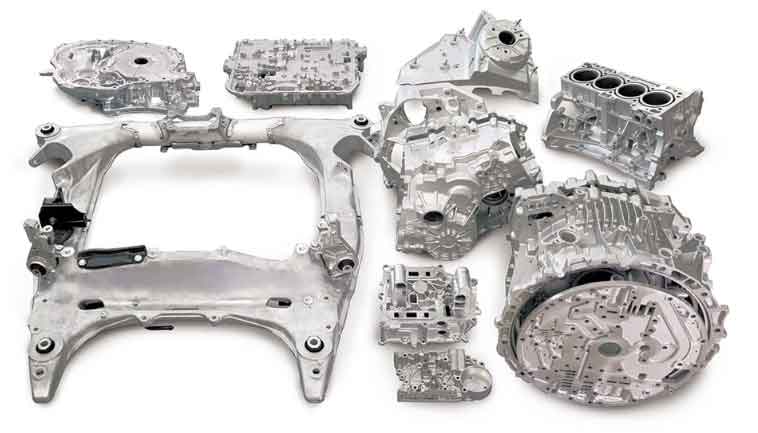With the rapid development of modern industry, die casting technology has gained extensive application across various sectors. As an efficient and precise manufacturing method, die casting has become indispensable in production processes. However, during die casting production, external factors significantly impact the quality of die castings—a critical concern for professionals. External factors refer to uncontrolled variables originating from environmental conditions, raw materials, equipment, and operational personnel. These variables can substantially affect die casting quality. This study focuses on analyzing these external influences and proposing effective countermeasures to enhance die casting quality and advance die casting technology.

Common External Factors in Die Casting Production
Die casting involves multiple external factors that critically influence production outcomes. Temperature regulation is paramount, as molten metal must maintain optimal fluidity within specific thermal ranges. Deviations cause incomplete mold filling or defective solidification, directly impacting die casting quality. Humidity variations alter mold adhesion properties, affecting metal flow dynamics. High-humidity environments promote moisture accumulation on mold surfaces, leading to uneven filling and porosity defects in die castings. The gaseous environment constitutes another vital factor, where inadequate venting causes gas entrapment and porosity. Harmful gases generated during die casting also pose environmental and safety hazards.
| Factor | Optimal Range | Failure Impact | Quality Defect |
|---|---|---|---|
| Temperature | 650-720°C (Al alloys) | ±15°C deviation | Shrinkage porosity, cold shuts |
| Humidity | 30-50% RH | >70% RH | Surface blisters, gas porosity |
| Gas Pressure | 0.9-1.1 atm | <0.85 atm | Air entrapment, voids |
Impact of External Factors on Die Casting Quality
Temperature and Humidity Effects
Temperature fluctuations critically affect molten metal viscosity and solidification kinetics. Elevated temperatures increase hydrogen solubility, causing porosity upon solidification as governed by Sievert’s Law:
$$ C_{H} = K \sqrt{P_{H_2}} $$
where \( C_{H} \) is hydrogen concentration, \( K \) is material constant, and \( P_{H_2} \) is partial pressure. High humidity induces steam formation at metal-mold interfaces, creating microporosity. The vapor pressure equation explains this phenomenon:
$$ P_v = \exp\left( A – \frac{B}{T + C} \right) $$
where \( P_v \) is vapor pressure, and \( A \), \( B \), \( C \) are constants. These conditions reduce die casting density by 5-12% and tensile strength by 15-30%.
Mold Design and Manufacturing
Mold engineering directly determines die casting integrity. Suboptimal gating systems cause turbulent flow and oxide entrainment, quantified by Reynolds number:
$$ Re = \frac{\rho v D}{\mu} $$
where \( \rho \) is density, \( v \) is velocity, \( D \) is diameter, and \( \mu \) is viscosity. When Re exceeds 2,000, defect probability increases exponentially. Cooling channel misalignment creates thermal gradients causing hot tears, as predicted by Fourier’s Law:
$$ q = -k \nabla T $$
Material selection equally impacts die casting surface quality. Low-hardness molds (≤40 HRC) wear rapidly, increasing surface roughness (Ra > 3.2μm) and dimensional inaccuracies beyond ±0.2mm tolerance.
Raw Material Quality
Alloy composition consistency is fundamental for die casting performance. Elemental variations beyond specification limits degrade mechanical properties:
| Element | Target (%) | Permissible Deviation | Strength Loss |
|---|---|---|---|
| Si (A380) | 7.5-9.5 | ±0.3 | 8-12% |
| Mg (AZ91D) | 8.3-9.7 | ±0.2 | 10-15% |
Impurity concentrations above 0.15% form stress concentrators, reducing fatigue life by 40-60%. Inclusion content follows the quality relationship:
$$ Q_m = K_i e^{-C_i / C_0} $$
where \( Q_m \) is metal quality index, \( K_i \) is constant, \( C_i \) is inclusion concentration, and \( C_0 \) is reference concentration.
Countermeasure Implementation
Production Environment Control
Precision environmental management ensures die casting consistency. Implementing HVAC systems with ±1°C stability and 45±5% RH regulation is essential. Ventilation requirements follow air exchange calculations:
$$ Q_v = \frac{V \cdot N}{60} $$
where \( Q_v \) is airflow (m³/min), \( V \) is room volume (m³), and \( N \) is air changes per hour (8-12 for die casting). Dehumidification systems should maintain dew point below 10°C to prevent condensation.
Mold Design Optimization
Advanced simulation-driven design eliminates flow defects. Flow analysis must achieve balanced filling within 0.05s divergence across gates. Thermal management requires conformal cooling channels maintaining temperature gradients below 15°C/mm. Material selection criteria include:
- Hot-work steels (H13/2344) with hardness ≥48 HRC
- Thermal conductivity >25 W/m·K
- Yield strength >1,500 MPa at 300°C
Mold maintenance protocols should include surface nitriding every 5,000 cycles and dimensional verification every 500 cycles.
Raw Material Quality Assurance
Supply chain controls must enforce strict material certification. Statistical process control (SPC) monitors alloy composition:
$$ \bar{X} \pm 3\sigma \leq \text{specification limits} $$
Advanced analytical methods ensure purity:
| Method | Detection Limit | Frequency | Key Parameters |
|---|---|---|---|
| OES Spectroscopy | 1 ppm | Per melt batch | Alloying elements |
| Ultrasonic Testing | 0.1 mm inclusions | Per 500 kg | Porosity level |
Supplier qualification requires PPAP documentation and quarterly audits, maintaining defect rates below 200 ppm.
Conclusion
External factors critically influence die casting quality through thermal, environmental, and material pathways. Temperature fluctuations beyond ±15°C induce porosity defects, while humidity exceeding 70% RH causes surface imperfections. Mold design imperfections lead to filling imbalances and dimensional inaccuracies, while raw material inconsistencies reduce mechanical properties by 10-30%. Effective countermeasures include implementing precision environmental controls (±1°C, 45±5% RH), adopting simulation-based mold engineering with advanced materials, and enforcing rigorous material certification protocols. These strategies collectively reduce defect rates by 40-60% and enhance die casting performance metrics. Continuous optimization of these parameters remains essential for advancing die casting technology and product quality in modern manufacturing.
